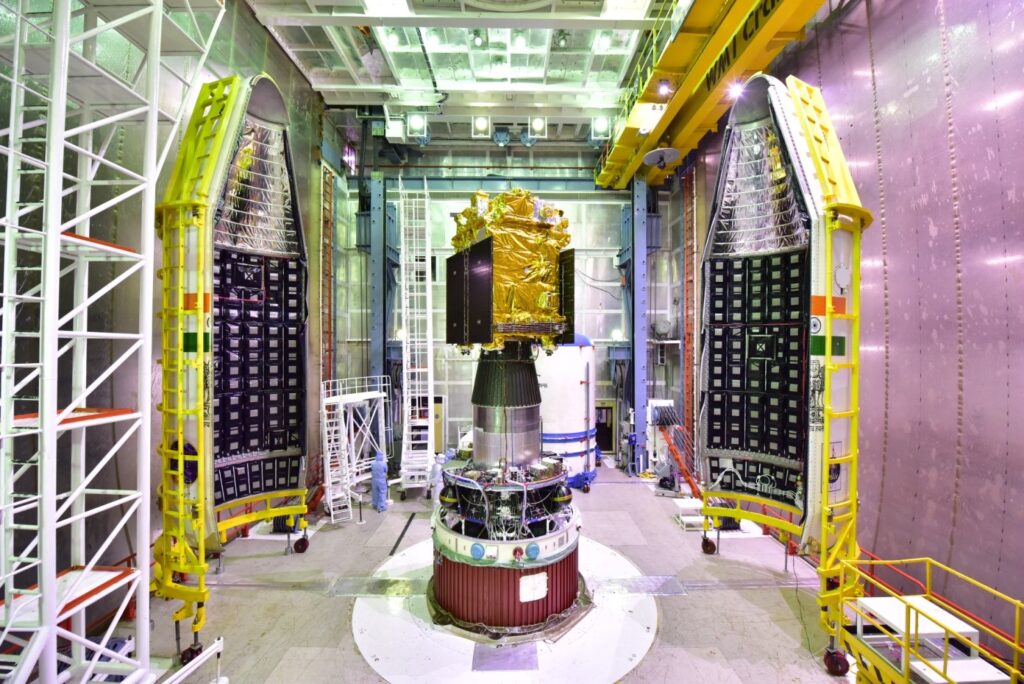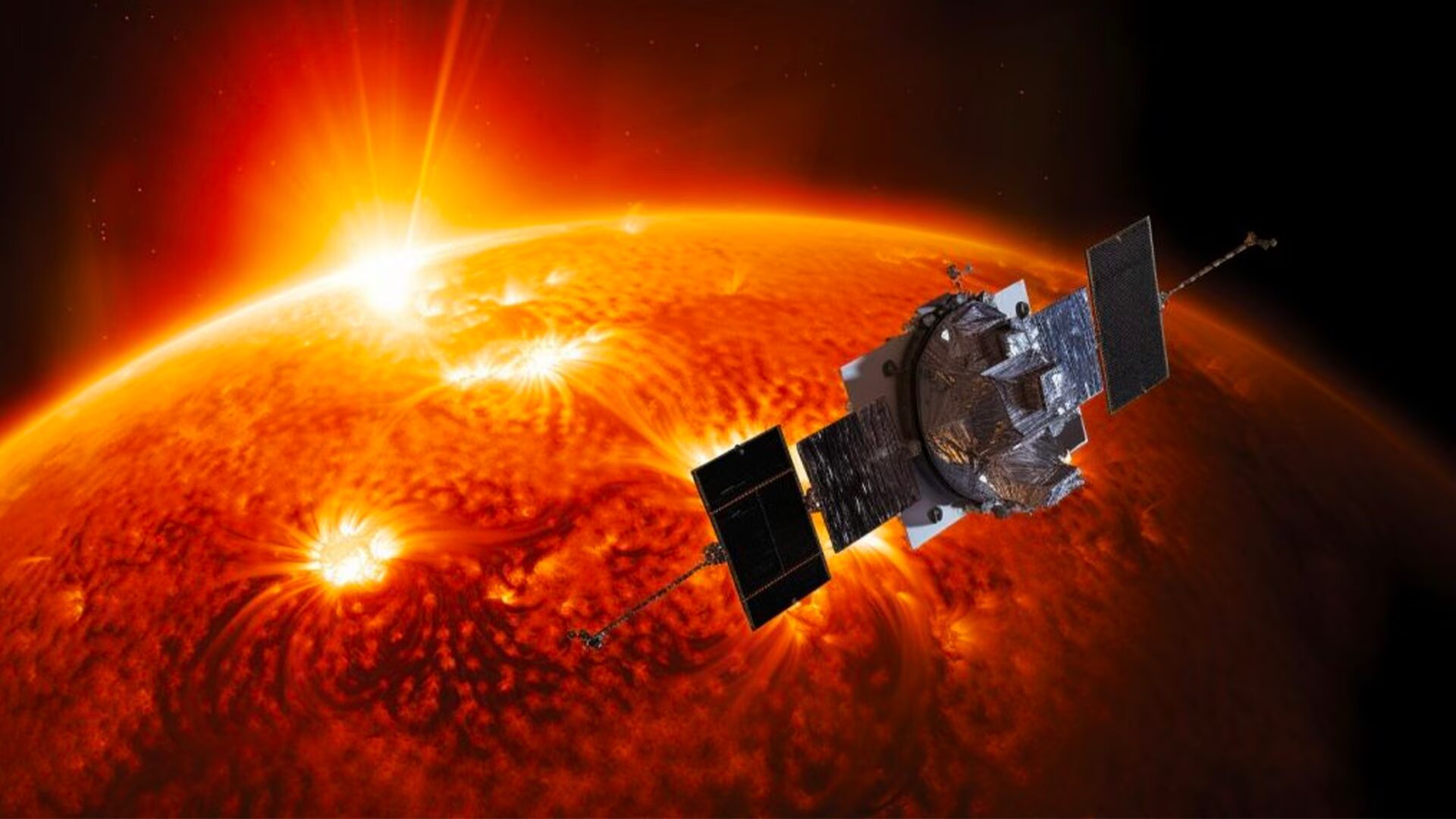At approximately 16:00 Hrs on January 6, 2024 (IST), the Halo-Orbit Insertion (HOI) for the solar observatory spacecraft Aditya-L1 was successfully carried out. The conclusive step of this operation entailed a brief activation of control engines.
Aditya-L1’s trajectory follows a recurring Halo orbit, positioned approximately 1.5 million km from Earth along the ever-shifting Sun-Earth line, boasting an orbital cycle of approximately 177.86 Earth days. This particular three-dimensional Halo orbit at L1, intricately involving the Sun, Earth, and the spacecraft, has been chosen with precision to guarantee a five-year mission lifespan. This strategic choice minimizes the need for station-keeping maneuvers, conserving fuel, and ensuring an uninterrupted and clear perspective of the sun throughout the mission duration.
The Aditya-L1 mission, an Indian solar observatory strategically positioned at Lagrangian point L1, serves the purpose of comprehensively studying the chromospheric and coronal dynamics of the Sun. Opting for a halo orbit around L1, rather than a Low Earth Orbit (LEO), offers distinct advantages:
- The halo orbit ensures a seamless change in Sun-spacecraft velocity throughout the orbit, catering to the needs of helioseismology.
- Being beyond Earth’s magnetosphere, it facilitates “in situ” sampling of the solar wind and particles.
- The chosen orbit allows uninterrupted and continuous observation of the Sun, along with a clear view of Earth, facilitating continuous communication with ground stations.

Halo orbit insertion:
Initiating the halo orbit insertion process, Aditya-L1 embarked on a critical phase as it traversed the XZ plane within the Sun-Earth-L1 rotating system, aligning with the necessary orbital state.
This maneuver, essential for achieving the required Y-velocity in the L1 rotating frame, involved neutralizing the X and Z velocity components. The targeted parameters for Aditya-L1’s Halo orbit were Ax: 209200 km, Ay: 663200 km, and Az: 120000 km, defining the semi-axes of the 3-dimensional orbit.
The insertion into this specific Halo orbit marked a pivotal mission phase, demanding meticulous navigation and control. Successful insertion required continuous monitoring and precise adjustments to the spacecraft’s speed and position using onboard thrusters.
Beyond showcasing ISRO’s prowess in intricate orbital maneuvers, the success of this insertion instills confidence for handling future interplanetary missions.
Crafted and realized at the UR Rao Satellite Centre (URSC), Aditya-L1 involved collaborative efforts from various ISRO centers. The scientific payloads on board were developed by Indian laboratories IIA, IUCA, and ISRO.
Launched on September 2, 2023, aboard PSLV-C57 from SDSC SHAR, Aditya-L1 commenced its journey from an elliptical parking orbit (EPO) of 235.6 km by 19502.7 km.
Progressing toward the Sun-Earth-L1 Lagrange point, the spacecraft, aided by the onboard propulsion system, incrementally increased its orbital size through five liquid engine burns (LEB) during the Earth orbit phase.
To achieve the desired trajectory and minimize incremental velocity addition, the trans-L1 injection (TL1I) maneuver, involving a carefully devised strategy, was executed as the fifth burn.
Two additional burns, TCM-1 on October 5, 2023, and TCM-2 on December 14, 2023, addressed errors and ensured compliance with Halo orbit insertion condition parameters. A cruise phase of approximately 110 days preceded the targeted Halo-Orbit Insertion (HOI) on January 6, 2024.
During the pre-commissioning phase, all payloads underwent rigorous testing, confirming their satisfactory performance.
The graphical representation below illustrates the two-dimensional depiction of the Halo orbit insertion process, highlighting the spacecraft’s trajectory from Earth toward the L1 point. Firing TCM-1 and TCM-2 oriented the spacecraft toward the Halo Orbit, reaching the HOI condition on January 6, 2024 (marked by the red dot).
The final firing at this point precisely aligned the spacecraft with the Halo Orbit, preventing it from moving in an alternate direction without the HOI maneuver.

Reference of article: Indian Space Research Organization, Department of Space

1 thought on “The Solar Mission Aditya-L1: The successful execution of the Halo-Orbit Insertion for Aditya-L1 has been achieved.”